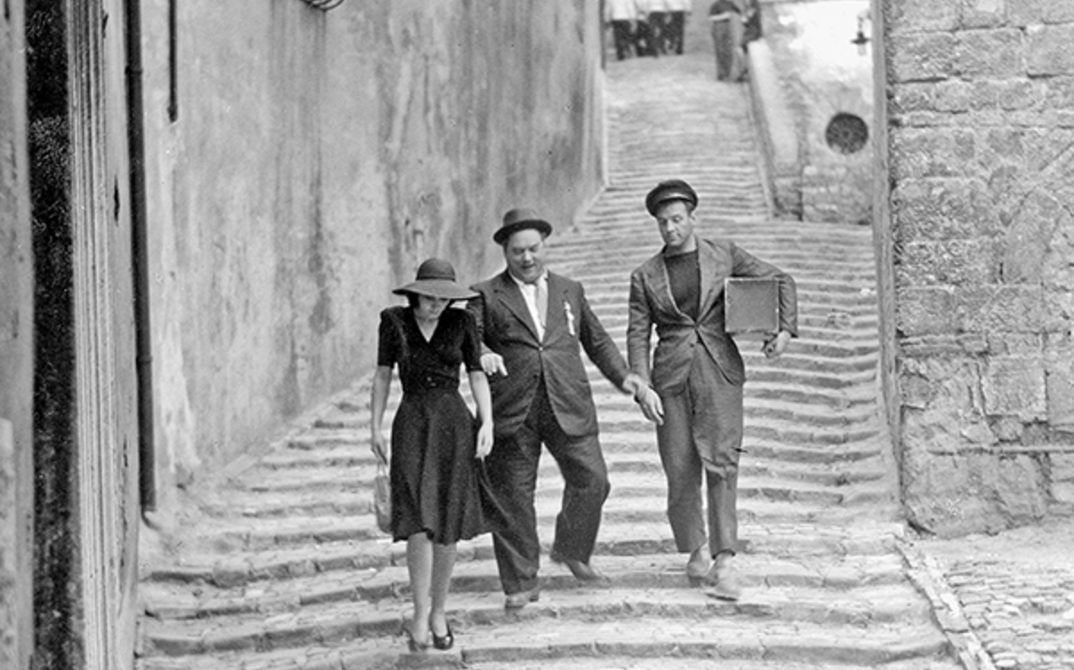Luchino Visconti: My path to OSSESSIONE
[…] The term “neorealism” arose from correspondence I conducted with Mario Serandrei, who is still my editor today. He saw the first rushes of OSSESSIONE and wrote me a long letter in which, among other things, he elucidated, “This film genre, which I see for the first time… I would call ‘neo-realistic’.” And that’s where the expression “neorealism” comes from; it was first coined for OSSESSIONE. (...)
(Giuseppe Ferrara: Entretien avec Luchino Visconti, Paris 1963; quoted in: Ulrich Gregor: Aspekte des italienischen Films 1, Bad Ems 1969, p. 58)
A veristic picture of Italy today
[…] Right around the year 1940, interest in contemporary North American literature began to blossom among Italian intellectuals. For the first time, Italian translations of the works of Faulkner, Hemingway and Steinbeck appeared; Italian authors like Vittorini began translating American texts themselves or, like Pavese, wrote essays on the literature of the United States.
In the face of the sterile art doctrine of Fascism, a breath of liberation emanated from this literature: here, all of a sudden, one felt the presence of real life and veracity also in depicting social oppositions whose mention Fascist cultural policy had rendered taboo. In the world of the American novels, the Italians ultimately discovered their own contemporary reality. We have to keep this in mind if we want to understand the reasons and the literary “climate” that led Visconti to shoot his film OSSESSIONE after James M. Cain’s novel “The Postman Always Rings Twice”. It wasn’t so much the criminal intrigue or the hardly outstanding stylistic qualities of the literary model that mattered to Visconti, but the chance the novel provided to sketch a naturalistic picture of Italy that would radically differ from the conventional, mythical Italy of white telephones, salons, and trains running on time that the official cinema of that time propagated. […]
What Visconti primarily succeeded in doing in OSSESSIONE was to paint a veristic, true-to-life, true-to-milieu panorama of life in the Italian provinces, as had never been seen in Italian film. OSSESSIONE reveals for the first time the contemporary reality of an Italy that is undisguised, un-rhetorical and far removed from all the official clichés, exposed in downright dismal narrowness. In 1942, that was a revolution. Visconti brought to the screen the décor of the poorly maintained provincial houses, the rural roads, the popular festivals with their singing contests, the city squares of Ancona and Ferrara, the sandbanks and river levees with an intensity and documentary gift for observation whose power has not faded in the least to this day. He did not employ these décors as a picturesque background, but understood how to tie milieu and nature with personality, with the character of his protagonists. Visconti’s characters in OSSESSIONE are rooted in and live from the northern Italian landscape. Visconti unfolds this landscape in long tracking shots and pans that replace the dissociating montage that he learned from the French, namely from Renoir. With this technique, Visconti was able to reflect and interweave milieu-defining details, characteristic aspects of the landscape, and certain aspects of his characters’ psychological behaviour. It is telling, incidentally, that Visconti mostly did without close-ups of faces and rather left the persons in the context of their milieu, which resulted in magnificent scenes, true anthology sequences of film history […].
(Ulrich Gregor, Von OSSESSIONE zu LA TERRA TREMA, Kinemathek, No. 32, February 1967, Infoblatt No. 5, 1. Internationales Forum des jungen Films, Berlin 1971, Download PDF)
